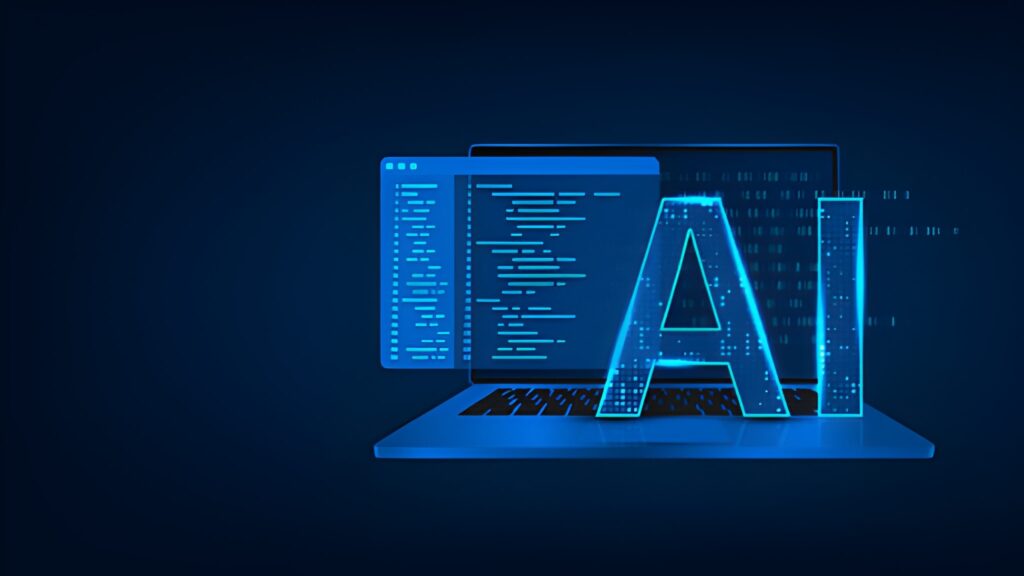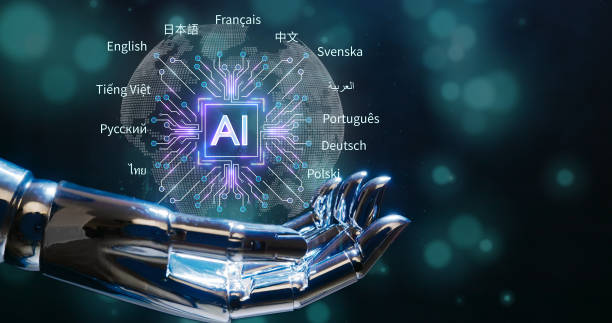Software testing stands at a transformative crossroads. Traditional manual approaches struggle under modern development pressures. Applications grow more complex daily. Release cycles compress continuously. User expectations rise relentlessly. Manual testing simply cannot keep pace. Testers drown in repetitive tasks. Test coverage remains incomplete. Critical bugs slip through. Releases get delayed.
AI in software testing fundamentally changes this equation. AI-powered testing tools automate repetitive work. Machine learning predicts where defects hide. Natural language processing makes automation accessible. Self-healing scripts adapt to application changes automatically. Intelligent systems analyze test results and recommend actions. This shift from manual to intelligent testing isn’t just evolutionary, it’s revolutionary. Organizations embracing AI-driven QA deliver faster, ship higher quality, and reduce costs simultaneously. This guide explores how AI transforms every aspect of software testing.
Contents
What is AI in Software Testing?
AI in software testing applies machine learning, generative AI, natural language processing, and predictive analytics to quality assurance activities. These technologies automate tasks that previously required human judgment. They analyze patterns humans cannot detect. They make predictions based on historical data. They adapt to changes without explicit programming.
Key AI technologies in testing include:
Machine Learning: Algorithms learn from test execution history. They identify patterns in defect data. They predict which code changes carry the highest risk. They optimize test suite execution order. They detect anomalies in application behavior automatically.
Generative AI: Creates test cases from requirements documents. Generates realistic test data automatically. Produces test scripts from natural language descriptions. Suggests fixes for failed tests. Generates documentation from test results.
Natural Language Processing: Understands requirements written in plain English. Converts user stories into executable tests. Analyzes defect descriptions to categorize issues. Enables conversational test authoring. Makes automation accessible to non-programmers.
Predictive Analytics: Forecasts defect-prone code areas. Estimates testing effort required. Predicts performance bottlenecks before they occur. Identifies flaky tests before they disrupt pipelines. Recommends optimal test prioritization.
Traditional manual testing relies on human effort entirely. Testers manually write test cases. They execute tests by hand. They analyze results through observation. They update tests when applications change. This approach scales poorly. Human error occurs frequently. Tedious repetition causes fatigue. Coverage remains limited by time constraints.
AI-powered testing operates fundamentally differently. Automation handles repetitive execution. Intelligent algorithms generate test cases. Self-healing mechanisms maintain scripts automatically. Predictive models prioritize high-value tests. Analytics provide actionable insights instantly. Testers focus on strategic activities requiring human creativity and judgment.
Core Applications of AI in Software Testing
AI-driven Test Case Generation
Manual test case creation consumes enormous time. Testers read requirements carefully. They design test scenarios mentally. They document steps meticulously. They define expected results precisely. This process takes days or weeks for complex applications.
AI generates test cases automatically from multiple sources:
Requirements Analysis: NLP algorithms parse requirement documents. They identify testable conditions. They generate corresponding test cases. Coverage gets mapped automatically. Gaps become visible immediately.
User Story Conversion: Agile teams write user stories in standard formats. AI extracts acceptance criteria automatically. It converts these into executable test scenarios. Story-test traceability happens without manual linking.
Historical Defect Patterns: Machine learning analyzes past bugs. It identifies common failure patterns. It generates tests targeting similar scenarios. This prevents regression of previously fixed issues.
Usage Analytics: AI examines actual user behavior data. It identifies common user journeys. It generates tests covering real-world usage patterns. This ensures testing aligns with actual application use.
The speed improvement proves dramatic. Tasks taking weeks to complete in hours. Coverage expands significantly. Human testers review AI-generated tests rather than creating them from scratch. Productivity multiplies.
Self-Healing Test Automation
Traditional automation breaks constantly. Developers change button IDs. They relocate page elements. They modify workflows. Each change breaks corresponding tests. Maintenance overhead often makes automation unsustainable.
Self-healing automation changes everything fundamentally. AI identifies elements through multiple strategies simultaneously:
- Element IDs and names
- CSS selectors and XPath
- Visual appearance and position
- Surrounding element context
- Element text content
- Accessibility attributes
When one identifier breaks, others continue working. The system updates references automatically. Tests adapt to application changes without human intervention. Maintenance overhead drops dramatically.
Machine learning improves healing accuracy over time. The system learns which identification strategies prove most reliable. It adapts to application-specific patterns. Success rates increase continuously.
Visual & UI Testing
Pixel-perfect comparison detects visual differences but generates excessive false positives. Minor rendering variations trigger failures. Anti-aliasing creates mismatches. Dynamic content causes problems. Maintenance becomes burdensome.
AI-powered visual testing uses advanced computer vision. It understands layouts semantically. It distinguishes meaningful changes from insignificant variations. It validates design compliance intelligently.
Key capabilities include:
- Layout shift detection across screen sizes
- Color scheme validation
- Font and typography verification
- Responsive design testing
- Cross-browser rendering comparison
- Accessibility contrast checking
The AI learns what constitutes acceptable variation. It ignores irrelevant differences. It flags genuine visual defects. False positive rates drop substantially.
Synthetic Test Data Generation
Creating realistic test data manually proves tedious. Testers invent names, addresses, and scenarios. Data lacks diversity. Edge cases get missed. Privacy concerns limit production data usage.
AI generates comprehensive, realistic test data automatically:
Demographic Diversity: Names representing multiple cultures. Addresses spanning geographic regions. Age distributions matching target demographics. Gender and identity variations.
Edge Case Coverage: Boundary values for numeric fields. Special characters in text inputs. Maximum length strings. Null and empty values. Invalid format combinations.
Privacy Compliance: Synthetic data resembles real information structurally but contains no actual personal data. GDPR and CCPA compliance happens automatically. Legal risks disappear.
Relationship Preservation: Related entities maintain logical connections. Orders link to valid customers. Transactions reference existing accounts. Referential integrity stays intact.
Generative models learn from data schemas and business rules. They produce unlimited test data on demand. Coverage expands dramatically without manual effort.
Performance Testing
Traditional performance testing uses scripted scenarios. These rarely match actual user behavior. Real users navigate unpredictably. They pause. They abandon actions. They switch between features randomly.
AI-powered performance testing simulates realistic behavior patterns:
Behavioral Modeling: Machine learning analyzes production usage logs. It identifies common navigation patterns. It models realistic user journeys. Load tests reflect actual usage accurately.
Bottleneck Prediction: Algorithms analyze code changes and infrastructure metrics. They predict performance impacts before testing. High-risk areas get targeted proactively.
Adaptive Load Generation: AI adjusts load patterns dynamically during testing. It explores interesting scenarios automatically. It identifies thresholds where performance degrades. Testing becomes exploratory rather than scripted.
Root Cause Analysis: When performance issues appear, AI correlates symptoms with causes. It examines logs, metrics, and traces simultaneously. It identifies bottleneck sources automatically. Debugging accelerates dramatically.
Natural Language Processing (NLP)
Traditional automation requires programming skills. Testers learn Selenium, Python, or JavaScript. This barrier limits automation adoption. Manual testers cannot contribute. Bottlenecks persist.
NLP-powered test authoring uses plain language:
- “Click the login button”
- “Enter ‘[email protected]’ in the email field”
- “Verify the welcome message appears”
- “Check that total equals $99.99”
AI converts these instructions into executable automation. Business analysts write tests. Manual testers contribute directly. Subject matter experts document scenarios naturally. The automation skills gap vanishes.
Conversational interfaces take this further. Testers describe scenarios verbally. AI asks clarifying questions. It generates complete test suites through dialogue. Automation becomes truly accessible.
Flaky Test Management
Flaky tests pass and fail non-deterministically. They undermine confidence in test suites. Teams waste time investigating false failures. Real issues get ignored among noise.
AI identifies flaky tests through pattern analysis:
- Execution history across multiple runs
- Environmental condition correlation
- Timing and synchronization issues
- Resource contention patterns
- Infrastructure stability metrics
Once identified, flaky tests get quarantined automatically. They don’t block pipelines. They run separately for analysis. Teams fix root causes systematically rather than randomly encountering failures.
Machine learning predicts which tests might become flaky. Timing dependencies get flagged. Resource-intensive tests get monitored. Preventive action happens before flakiness impacts teams.
Security Testing
Security vulnerabilities hide in complex codebases. Manual security reviews miss issues. Traditional scanning tools generate false positives. Real threats escape detection.
AI-enhanced security testing learns from historical attack data:
Vulnerability Pattern Recognition: Models trained on known exploits identify similar patterns in new code. SQL injection vectors get detected. XSS vulnerabilities surface. Authentication bypasses become visible.
Risk Scoring: Not all vulnerabilities carry equal risk. AI assesses severity based on exploitability, data sensitivity, and potential impact. Teams prioritize fixes appropriately.
Attack Simulation: AI generates creative attack scenarios automatically. It explores unusual input combinations. It tests authorization boundaries thoroughly. Coverage exceeds manual pen testing.
False Positive Reduction: Context-aware analysis distinguishes genuine threats from benign patterns. Alert fatigue decreases. Security teams focus on real issues.
AI-powered Reporting & Analytics
Traditional test reports list pass/fail counts. They show execution times. They provide stack traces. Technical details overwhelm stakeholders. Business impact remains unclear.
AI-powered analytics translate technical findings into business insights:
Risk Assessment: “The payment module has 23% test failure rate—revenue processing faces high risk.” Business stakeholders understand immediately.
Trend Analysis: “Defect rates increased 40% after latest sprint—quality declining.” Actionable patterns emerge automatically.
Prediction: “At current defect discovery rate, release will slip two weeks.” Planning adjusts proactively.
Recommendation: “Increase test coverage in authentication module—80% of production incidents originate there.” Resources allocate optimally.
Dashboards highlight what matters most. Executives see release readiness. Managers see team productivity. Developers see component quality. Everyone gets relevant information automatically.
Bias and Fairness Checking
AI-powered applications can perpetuate biases present in training data. Facial recognition fails for certain demographics. Language models generate stereotyped content. Recommendation systems show discriminatory patterns.
AI testing tools now include bias detection:
Demographic Parity Testing: Validates equal outcomes across demographic groups. Approval rates, error rates, and recommendations get analyzed for disparities.
Fairness Metrics: Calculates statistical measures of fairness automatically. Multiple fairness definitions get evaluated. Trade-offs become visible.
Dataset Analysis: Examines training data for representation gaps. Identifies underrepresented groups. Recommends data augmentation strategies.
Counterfactual Testing: Changes demographic attributes while keeping other factors constant. Reveals whether outcomes depend inappropriately on protected characteristics.
This testing proves critical for responsible AI deployment. Legal compliance improves. Ethical concerns get addressed. User trust strengthens.
Key Benefits Over Manual Testing
Increased Speed and Reduced Effort
AI automation accelerates testing dramatically. Test case generation happens in minutes rather than days. Execution parallelizes across infrastructure automatically. Results analyze instantly. Feedback reaches developers within minutes of code commits.
Manual test creation effort drops by 60-80%. Testers review AI-generated tests instead of writing from scratch. Execution effort disappears entirely through automation. Analysis effort reduces through intelligent reporting.
Sprint velocities increase. Release cycles compress. Time-to-market improves significantly. Competitive advantage grows.
Higher Accuracy and Consistency
Humans make mistakes during repetitive tasks. Attention wavers during tedious test execution. Steps get skipped accidentally. Results get misinterpreted occasionally.
AI executes tests identically every time. No steps get forgotten. No data entry errors occur. Timing remains consistent. Results get recorded accurately always.
Defect detection rates improve measurably. Issues that humans might miss get caught reliably. False negatives decrease. Product quality rises.
Superior Test Coverage
Manual testing faces time constraints. Comprehensive testing proves impossible for complex applications. Teams prioritize high-value scenarios. Edge cases get skipped. Certain combinations never get tested.
AI expands coverage dramatically:
- Generates thousands of test cases automatically
- Explores unusual input combinations systematically
- Tests across all supported browsers and devices
- Validates numerous user journey variations
- Checks edge cases exhaustively
Coverage metrics increase from 40-60% to 80-95%. Hidden bugs surface. User-reported defects decrease. Confidence grows.
Automated Maintenance and Scalability
Traditional automation maintenance consumes 40-60% of automation team effort. Every UI change breaks tests. Every workflow modification requires script updates. Scalability hits limits quickly.
Self-healing automation reduces maintenance to 10-20% of effort. Tests adapt automatically. Scaling happens without proportional staff increases. Organizations automate thousands of tests sustainably.
Fast-release cycles become practical. Daily deployments work reliably. Continuous delivery becomes reality.
Tools Supporting AI-Driven Software Testing
LambdaTest with KaneAI
LambdaTest’s KaneAI brings generative AI capabilities to cloud testing. Natural language test authoring makes automation accessible. Smart test planning suggests comprehensive scenarios. Intelligent failure analysis identifies root causes automatically.
The platform combines AI with cloud execution infrastructure. Tests run across 3000+ browser and device combinations. Parallel execution compresses testing windows. Real device access ensures realistic validation.
Self-healing keeps automation stable through application changes. AI-powered analytics provide actionable insights. Integration with CI/CD pipelines enables continuous intelligent testing.
Xray with AI Extensions
Xray integrates AI capabilities into Jira-native test management. Intelligent test case suggestions leverage requirements and defect history. Predictive analytics identify high-risk areas. Smart dashboards highlight critical issues automatically.
TestRail with AI Analytics
TestRail incorporates machine learning for test optimization. Predictive models recommend test prioritization. Defect pattern analysis guides focus areas. Trend detection identifies quality degradation early.
Cloud-Based AI-Native Tools
Modern platforms built AI-first offer advantages over retrofitted solutions. They leverage cloud scalability naturally. They process vast datasets efficiently. They update models continuously. They deliver intelligent features seamlessly.
Cloud deployment eliminates infrastructure management. Teams access capabilities immediately. Scaling happens transparently. Updates deploy automatically. Innovation accelerates.
Best Practices for Adopting AI in QA
Start with Augmentation
Don’t attempt complete replacement of existing processes immediately. Begin by augmenting manual workflows with AI assistance. Add intelligent test generation to existing test design. Enhance current automation with self-healing. Supplement manual analysis with AI insights.
This gradual approach reduces risk. Teams build confidence progressively. Resistance decreases through demonstrated value. Adoption succeeds more reliably.
Integrate with Existing Frameworks
Automation AI tools should complement current technology stacks. Connect them to existing test frameworks. Integrate with current CI/CD pipelines. Link to established defect trackers. Maintain existing team workflows.
This integration preserves investments. Learning curves stay manageable. Disruption minimizes. Productivity maintains during transition.
Monitor and Validate AI Recommendations
AI suggestions require human validation initially. Review generated test cases for accuracy. Verify predicted risks make sense. Confirm recommended prioritizations align with business understanding.
Trust builds through consistent accuracy. Validation requirements decrease as confidence grows. Human oversight remains important for critical decisions.
Maintain Human Oversight
AI handles repetitive, algorithmic tasks excellently. Humans excel at creative, ethical, and exploratory work. Preserve human involvement where judgment matters:
- Exploratory testing uncovering unexpected issues
- Ethical implications of test coverage decisions
- Creative test scenario design
- Stakeholder communication and negotiation
- Strategic quality planning
This human-AI partnership delivers optimal results. Automation handles scale. Humans provide wisdom.
Train and Update Models Continuously
AI models require current data for accuracy. Feed them recent test results. Update them with new defect patterns. Retrain them when applications change significantly.
Model performance improves continuously with fresh data. Predictions become more accurate. Recommendations grow more relevant. Value increases over time.
Challenges and Future Directions
Current Hurdles
Trust in AI Recommendations: Teams question AI suggestions initially. Black-box decision-making creates uncertainty. Explainable AI helps but remains imperfect. Building confidence takes time and demonstrated accuracy.
Integration Complexity: Connecting AI tools to existing infrastructure proves challenging sometimes. Legacy systems resist integration. Data formats vary. API capabilities differ. Technical expertise requirements remain significant.
Data Quality Requirements: AI models need high-quality training data. Incomplete test history limits accuracy. Poorly documented defects reduce effectiveness. Data cleanup becomes necessary prerequisites.
Cost Considerations: Advanced AI platforms carry premium pricing. ROI timelines extend months. Budget constraints limit adoption. Smaller organizations struggle with investments.
The Future
AI as Co-Pilot: Future QA tools will function as intelligent assistants. Conversational interfaces will enable natural collaboration. AI will suggest, explain, and execute. Humans will guide, validate, and decide. Partnership will replace replacement.
Proactive Risk Management: AI will predict defects before testing begins. Code analysis will identify problem areas automatically. Risk scores will guide resource allocation. Prevention will eclipse detection.
Hyper-Personalized QA: Testing will adapt to specific application contexts automatically. AI will learn organizational patterns. Recommendations will reflect company-specific priorities. Generic approaches will give way to customized strategies.
Context-Aware Testing: AI will understand business context deeply. It will know revenue-critical features. It will recognize peak usage periods. It will prioritize testing accordingly. Business alignment will improve dramatically.
Human-in-the-Loop Strategies: Rather than full automation, hybrid approaches will dominate. AI will handle scale and repetition. Humans will provide creativity and judgment. Collaboration will optimize outcomes. Neither will work effectively alone.
Conclusion
AI fundamentally transforms software testing from manual, repetitive work into intelligent, automated quality engineering. Traditional approaches cannot meet modern demands. Speed requirements exceed human capabilities. Complexity surpasses manual comprehension. Coverage needs overwhelm available resources. AI solves these challenges systematically through automation, intelligence, and adaptability.




